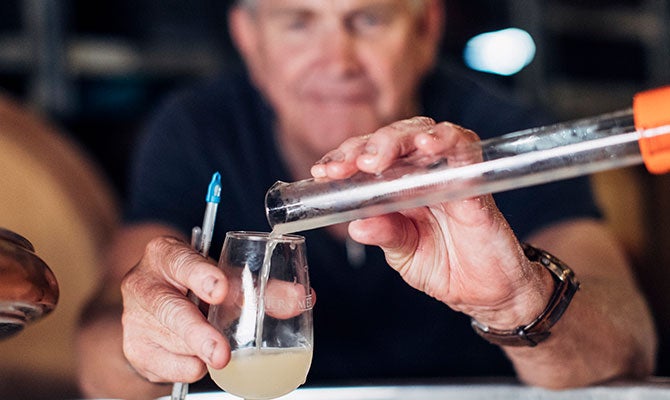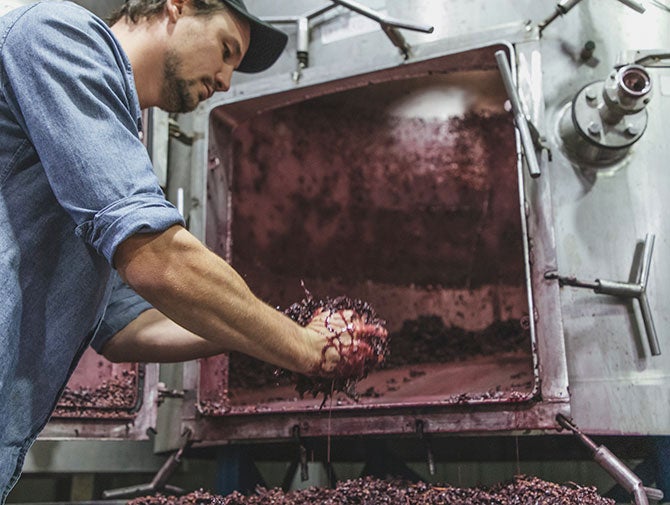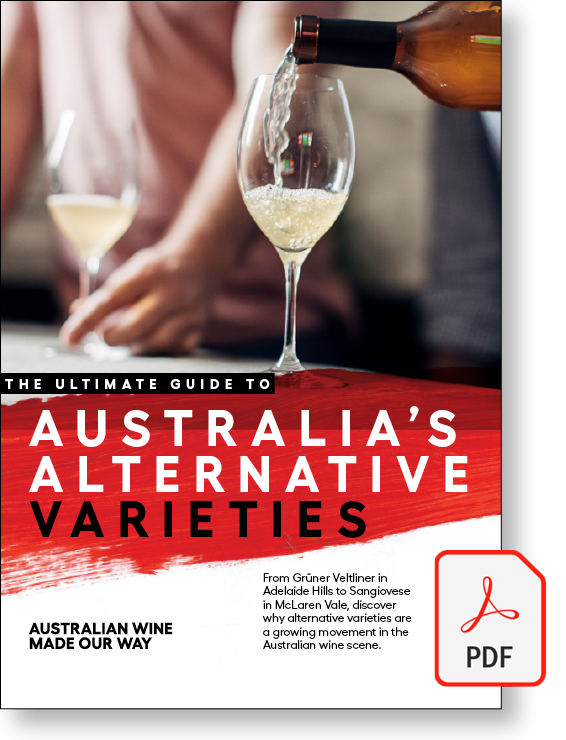THE RISE OF ALTERNATIVE VARIETIES
If you’ve enjoyed Australian wine, chances are you’ve sipped an Aussie Shiraz, Chardonnay or Cabernet Sauvignon. But as with one of the most diverse wine scenes in the world, Australian wine is much more than that. Alternative grape varieties, from Arneis to Zinfandel, are shaking things up, with innovative growers and makers exploring these diverse wines through a uniquely Australian lens.
These ‘alternative’ varieties aren’t new to the world – they’re simply grape varieties that aren’t among the mainstream vines planted in Australia. And there are lots of them. Australia grows more than 100 different grape varieties across 65 wine regions. They include grapes originally from Italy, France, Spain, Georgia, Greece, Portugal, Germany and Austria. And the list is growing.
Alternative varieties only make up around 3 per cent of total plantings. So it’s safe to say that heavy-hitting wines like Shiraz, Grenache, Chardonnay and Semillon aren’t going anywhere any time soon. But with many emerging varieties so well suited to Australia’s changing climate and lifestyle, they’re only getting bigger.
WHY ALTERNATIVE VARIETIES – AND WHY NOW?
The rise and rise of alternative varieties in Australia haven’t happened overnight. Some of these vines have been growing here for decades and even longer. The red grape Dolcetto, for example, was first planted in the 1860s. And some varieties, like Pinot Gris/Grigio, have made the leap from alternative to mainstream. But there’s been a boom in emerging varieties over the past couple of decades.
One of the reasons for this is Australia’s drive to innovate. Our wine producers are curious by nature, perfecting old concepts and playing with new ideas. Without laws restricting what can be planted and where (which is the case in many European regions), Australia has become a haven of innovation and experimentation, with growers and makers exploring how different varieties express themselves in their unique terroir.
Australia’s changing climate is another driving force. Increasing temperatures and less rain are creating the need for varieties that suit these conditions. On top of that, the wine community is increasingly adopting sustainable grape-growing and winemaking practices, including planting vines that need less water.
A third reason behind the rise of emerging varieties is global influence. Over the decades, immigrants looking for a taste of home have planted new varieties, giving their wines an Australian accent and creating something entirely new. Now with quality at an all-time high and wine lovers looking for something original, these wines are in demand.
MASTERFULLY EXPERIMENTAL: REGIONS AND MAKERS LEADING THE WAY
You’ll find alternative varieties growing in most of Australia’s 65 wine regions – and more are being planted every year. These varieties play an important role in many regions, where they complement the classics and keep things fresh.
Some of these regions include the Barossa Valley, Riverland and Adelaide Hills in South Australia; Victoria’s Yarra Valley and Mornington Peninsula; Margaret River and Great Southern in Western Australia; the Hunter Valley, Mudgee and Canberra District in New South Wales; and the vast Murray Darling, which spans Victoria and New South Wales.
A TRADITION OF INNOVATION
Some regions have become alternative variety hotspots, including McLaren Vale in South Australia. In this historic but progressive region, growers have been cultivating lesser-known grapes for decades, including Vermentino, Tempranillo and Nero d’Avola. McLaren Vale’s acclaimed Coriole winery helped to pioneer Fiano and Sangiovese in Australia.
“We’re in a luxury position in McLaren Vale and in Australia where we’re allowed to push the boundaries,” says Senior Winemaker Duncan Lloyd. “We’re allowed to experiment; we’re allowed to have freedom of expression with our vineyards and our wines.”
IMAGINATION IN THE SUNSHINE STATE
In Queensland’s Granite Belt wine region, trailblazers’ rule. Nearly every vineyard in this budding region is home to alternative varieties, where they’re dubbed ‘Strange Birds’. There’s even a dedicated wine trail, where you can taste everything from Gewürztraminer to Saperavi. At Sirromet Wines, visionary vigneron Mike Hayes is trialling the ‘vineyard of the future’, filled with varieties chosen for a changing climate.

Photo: Mike Hayes | Sirromet Wines
“In the Granite Belt, we have lost 30 per cent of our rainfall in the last decade, so now we’re looking at drought-tolerant varieties,” says Mike. “Luckily we are not governed by specific styles or varieties like some regions around the world. So we’re becoming famous for our emerging varieties.”
ITALIAN INSPIRATION
Victoria’s cool-climate King Valley is another region defined by its alternative inclination – largely thanks to its Italian immigrants. Alfredo and Katrina Pizzini of Pizzini Wines were among the first to trial varieties such as Nebbiolo and Sangiovese, which now thrive in the region.
“We’re making wine from our terroir, we’re not trying to make wine to reflect the wines of Europe,” says Alfredo. “It’s a reflection of our backyards.”
Australia’s wine community is always evolving, and one of the most exciting changes is happening from the ground up. From rogue to refined, classic to contemporary, Australia’s alternative varieties and emerging wines are making their mark. These wines are as diverse as the people who make them – and they’ve got a big future in Australian wine.





